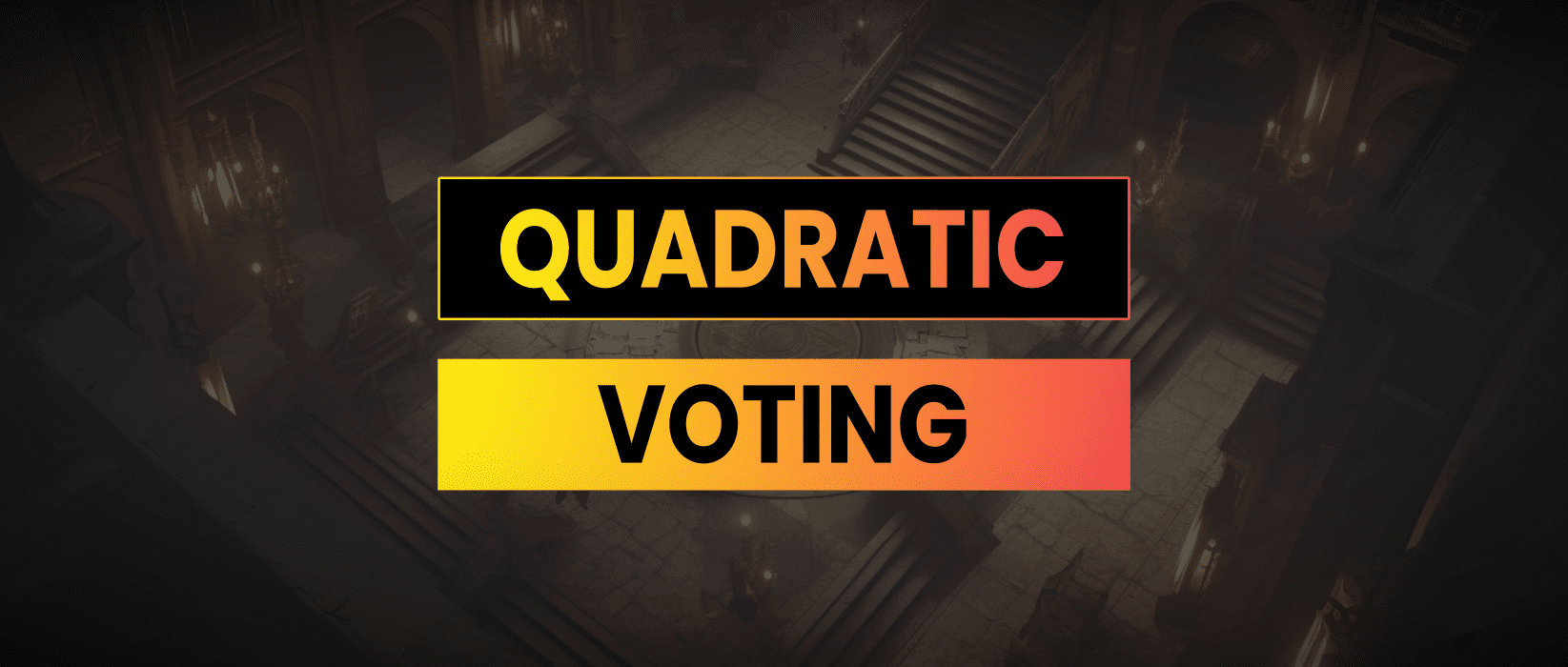Quadratic voting has gained popularity in recent years through adoption on applications such as Gitcoin Grants. Quadratic voting has the potential to fundamentally improve how public decisions are made. This essay will explain what quadratic voting is, how it works and what problems it solves.
- How Quadratic Voting Works
- Understanding Public Goods
- Tyranny Of The Majority
- 8 Benefits To Quadratic Voting

How Quadratic Voting Works
The process of quadratic voting involves allocating credits to each voter and allowing them to distribute their credits among a set of options. The votes are then calculated by taking the square root of the credits allocated to each choice.
Voters are given a certain number of votes but the cost of each additional vote is quadratic. For example, if an individual has 10 votes, their first vote might cost 1 unit, their second vote might cost 4 units, their third vote might cost 9 units and so on.
Individuals have to make trade offs when deciding how to allocate their votes. They can use their votes to express their preferences for public goods that they value highly but the cost of each additional vote makes it difficult for them to express their preferences for every public good.
Quadratic voting allows individuals to express their preferences in a more nuanced way than traditional voting mechanisms. In traditional voting, each individual has one vote, regardless of how strongly they feel about the issue at hand. This means that individuals who care deeply about a particular issue are not able to express their preferences as effectively as those who are less passionate. Quadratic voting allows individuals to express their preferences more accurately, as they can choose to allocate more votes to the issues they care about most.
In blockchain communities additional votes can be allocated to those who feel strongly about a particular decision, but the cost of these additional votes becomes more expensive quadratically.
This prevents a single group from quietly taking control, as a group would have to purchase a costly number of tokens over multiple governance cycles to do so. This also alerts the rest of the blockchain community to the issue, allowing them to take action and prevent any takeover.
Understanding Public Goods
To understand the potential for quadratic voting, it is helpful to consider the existing social technology of money and private property. Money and private property are powerful social technologies that allow for the efficient production and distribution of private goods.
- Private goods are rivalrous, their consumption by one person reduces the amount available for others and excludable, preventing others from consuming them.
- Public goods are non-rivalrous, their consumption by one person does not reduce the amount available for others and non-excludable not preventing others from consuming them.
When it comes to producing private goods, the market mechanism works well. The price system allows for the efficient allocation of resources, as individuals can choose to consume or produce goods based on their preferences and budget constraints.
When it comes to producing public goods, the market mechanism does not work as well. Since public goods are non-excludable, it is difficult to charge people for their consumption. This creates a free rider problem, where individuals have an incentive to consume the public good without contributing to its production.
The combination of these paradigms creates a situation where public goods are underfunded relative to their potential benefit to society.
Tyranny Of The Majority
The tyranny of the majority is a term used to describe a situation in which a majority group exercises its power in such a way as to suppress or marginalize minority groups.
In political science, it is often used to describe a situation in which a democratic majority uses its power to oppress the minority. This can occur when majority rule is used to override the interests or rights of minorities, leading to the suppression of dissenting views and the imposition of the will of the majority on the minority.
The concept highlights the need for protecting the rights of individuals and minority groups against the unchecked power of the majority in democratic societies.
8 Benefits To Quadratic Voting
Quadratic voting has several benefits.
- Encourages voters to consider their priorities and assign their votes accordingly
- Allows for more nuanced and precise expressions of preferences than traditional voting methods
- Provides a way to address the “tyranny of the majority” problem in which minority voices are ignored
- Promotes cooperation and compromise by requiring voters to allocate their limited voting power among multiple options
- Allows for more accurate representation of diverse viewpoints and interests
- Can be used to measure public support for issues or proposals, even if the support is not necessarily a majority
- Can help reduce polarization and promote consensus-building by incentivizing voters to seek common ground
- Provides a way to prioritize multiple issues or proposals in a fair and transparent manner
Quadratic voting is an effective way for organizations to democratically allocate resources, capture community sentiment and give greater power to minority stakeholders.


